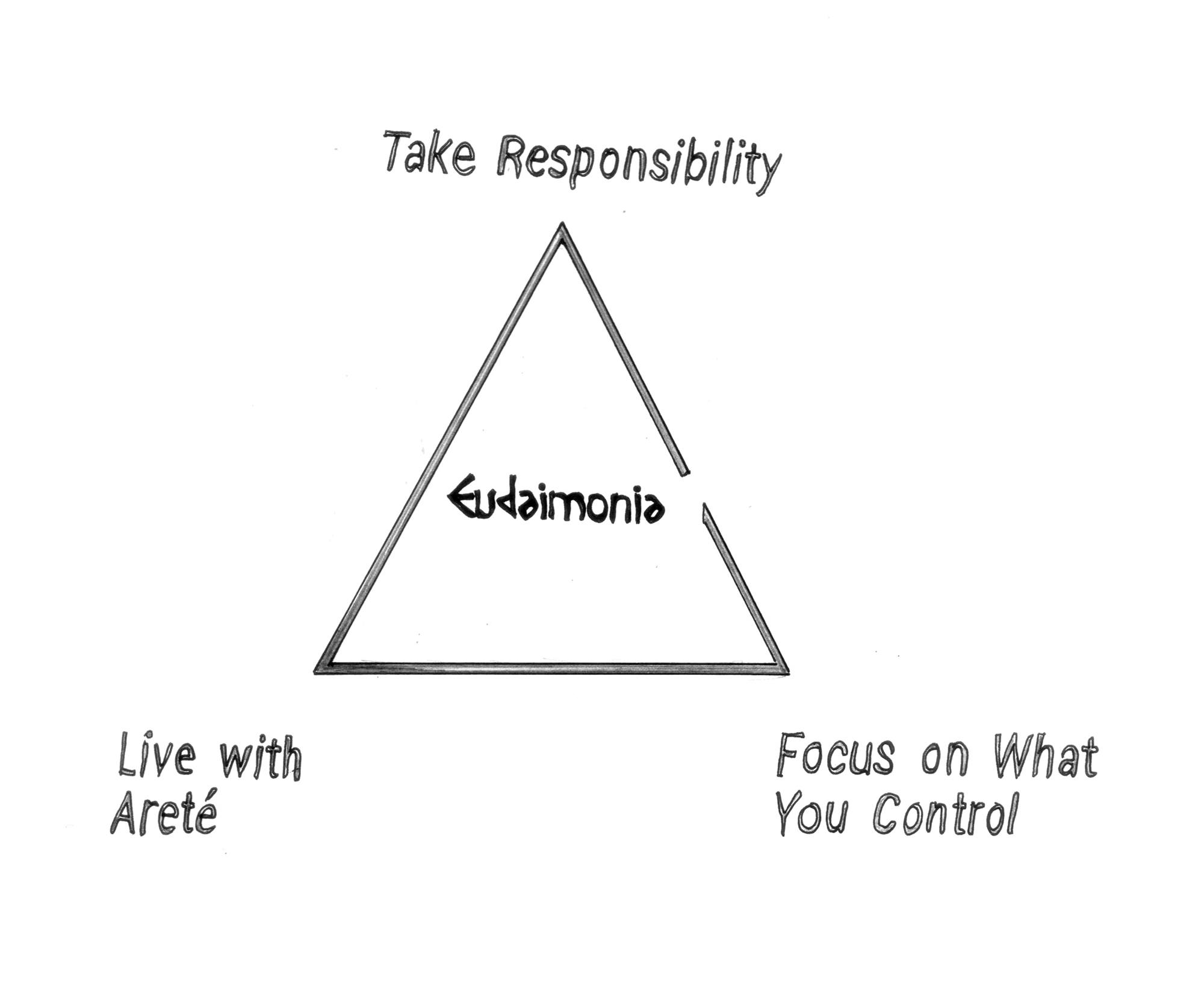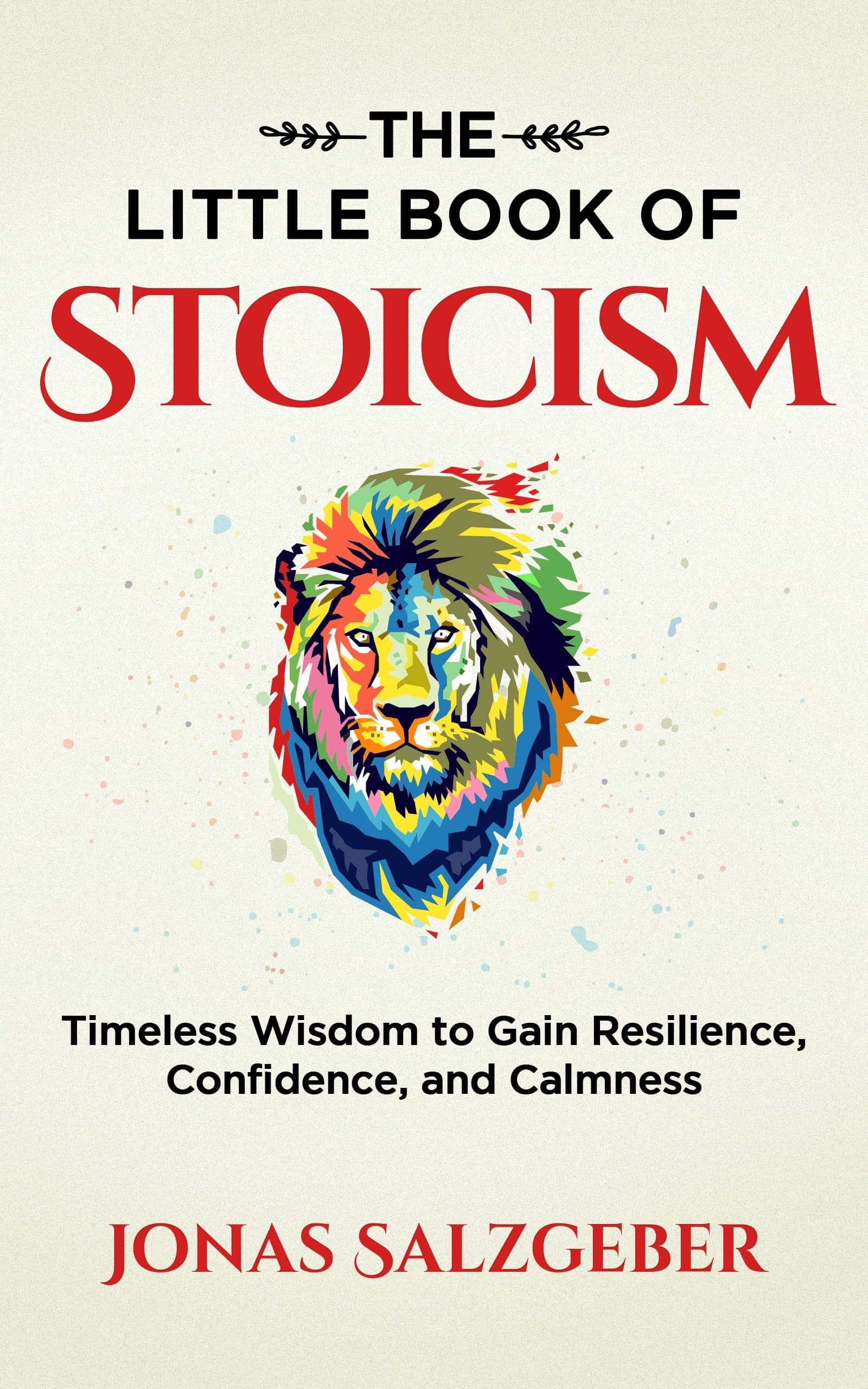- Author: Jonas Salzgeber
- Publisher: Jonas Salzgeber
- Rating: ⭐⭐⭐⭐
- Link Amazon : Book The little book of stoicism
- Pages: 287
- Time to Read: 10 Days
🚀 The Book in 3 Sentences
- The ultimate goal of stoicism is living Eudaimonia, which means in good terms with your inner daimon
- Stoicism is something that has to be practiced again and again, it is not something that can be achieved
- To practice stoicism you have to take responsibility, live with areté and focus on what you control
🕵🏼Who Should Read It?
This book has a very basic and beginner-like approach to Stoicism. It covers all the major Stoics in the history of the human species and explains the basic principles that these Stoics taught. That's why the book is perfect for everyone new to Stoicism and wanting to learn the foundations. However, the book is also a good read for people who have already been confronted with the teachings of Stoicism.
☘️ How the Book Changed Me
The book equipped me with Stoic principles and tips to apply in everyday life. It strengthened and improved my knowledge of Stoicism. In the chapter “Preparing Practices”, Jonas Salzgeber lists practices for living as a Stoic. This list provides good direction and shows the basic practices to undertake.
✍️ My Top 3 Quotes
“Seek not for events to happen as you wish but rather wish for events to happen as they do and your life will go smoothly.” Epictetus
“The impediment to action advances actions. What stands in the way becomes the way.” Marcus Aurelius
“Leisure without study is death— a tomb for the living person.” Seneca
📒 Summary + Notes
A long time ago, Stoicism was deeply rooted in the educational system. People saw it as a practice to pursue happiness, and they aspired to live and die well. Sadly, with the passage of time, the teachings of the Stoics receded into the background, and fewer and fewer people now live the Stoic way of life. The educational system no longer deems it appropriate to teach how to live happily; instead, it focuses on teaching the pursuit of status and materialistic things.
Today, more and more people are becoming familiar with Stoicism again, thanks to the hard work of popular Stoics. New Stoics and authors are emerging, leading to its resurgence in popularity.
1 The most important Stoic Philosophers
There were a lot of people, especially in the old times who influenced Stoicism but not one of them had a bigger impact on modern-day Stoicism than these four individuals.
Seneca the Younger (c. 4 BCE – 65 CE)
Seneca was born around the time of Jesus in Spain and was educated in Rome, Italy. He was a highly successful playwright and achieved wealth through intelligent financial ventures. Seneca is considered one of the finest writers of antiquity, and much of his work has survived, serving as an important source of Stoic philosophy.
Musonius Rufus (c. 30 CE – c. 100 CE)
Musonius Rufus is the least known Stoic of Rome. He had his own Stoic school where he taught a simple and practical philosophy. He believed it was unnecessary to teach things that were of no practical value. Musonius offered detailed advice on eating habits, one's sex life, proper dress, and how to behave towards one's parents. Unfortunately, Rufus never wrote down his teachings and wisdom.
Epictetus (c. 55 CE – c. 135 CE)
Epictetus had a remarkable life trajectory. He started as a slave and was later purchased by a secretary of Nero, the Emperor of Rome. Upon the death of his owner, Epictetus gained his freedom and established a school where he taught his philosophy.
Marcus Aurelius (121 CE – 180 CE)
Marcus Aurelius is one of the most renowned Emperors of the Roman Empire. Furthermore, he remains to this day the most well-known Stoic philosopher, primarily due to his book 'Meditations,' which I have already covered in a blog.
2 The Stoic Happiness Triangle
The core principles of the teaching of Stoic Philosophy can be covered with the Stoic Happiness Triangle. This Triangle was invented by Jonas Salzgeber.
The Triangle shows the principles “Take Responsibilities”, “Live with Areté” and “Focus on what you control”.

Let’s discuss the meaning of all the other principles.
Eudaimonia
In the middle of the Triangle, there is Edaimonia. It represents the ultimate goal of life. It means being on good terms (eu) with your inner daimon, your highest self.
Live with Areté
If we want to be on good terms with our highest self, we need to close the gap between what we’re capable of and what we’re actually doing. This is really about being your best version in the here and now, explains Jonas in this book.
Focus on what you control
Jonas explains this as follows: At all times, we need to focus on the things we control, and take the rest as it happens. What already is has to be accepted because it’s beyond our power to undo it. What’s beyond our power is ultimately not important for our flourishing. What’s important for our flourishing is what we choose to do with the given external circumstances.
Take Responsibility
Good and bad come solely from yourself. This follows the first two corners that say external things don’t matter for the good life, so living with areté, which is within your control, is enough to flourish in life. Also, you’re responsible for your life because every external event you don’t control offers an area you can control, namely how you choose to respond to this event.
Now after we have discussed what stoicism is and what values are contained in this philosophy we can now look at how stoicism can be practiced.
3 How to practice Stoicism
In this chapter, Jonas Salzgeber discusses the core principles of practicing Stoicism.
The most important principle among them is to Brace Yourself. This means that all the negative and challenging aspects of your life should be viewed as opportunities for personal growth and inner strength. The more difficulties you face, the stronger you will become.
To achieve this, it is crucial to be mindful. A Stoic is capable of pausing between a stimulus and their response to that stimulus. We need to be aware of our lives in order to make positive changes. Additionally, living in the present moment is essential, as it is the only aspect of life that we can control. If you want to learn more about mindfulness and living in the present, I recommend checking out the blog from the book The Power of Now.
Also, to practice Stoicism you need self-discipline. To improve in any area of life needs effort and with that self-discipline to keep trying and keep coming back.
4 Practices
At this stage of the book, Jonas lists important practices for training oneself to live a Stoic way of life. Due to the limited space in this blog, I will only list the most important practices for me in this section.
Remind Yourself of the Impermanence of Things
This is highly significant considering the nature of life. Nothing is permanent, and everything comes and goes. Therefore, we should not cling to things but instead accept and appreciate what we have or experience in the present moment.
Contemplate Your Own Death
Although it may sound intimidating, contemplating our own death holds immense value if approached correctly. Many people fear death because they are afraid of missing out. However, as previously mentioned, "nothing is impermanent." That's why it's crucial to reflect on our own mortality. This practice helps us stop wasting time on trivial matters and increases mindfulness. One exercise I find helpful is called "The Funeral," where you imagine your own funeral. Envision your family gathering and delivering speeches. The question is: what do you want your family to say about you? This exercise aids in determining your core values and improving your focus on what truly matters.
Eliminate the Nonessential
This should be self-evident, yet it is one of the most challenging things to accomplish. Focusing on the essentials is a struggle for every individual. However, when achieved, it brings immense benefits.
Please note that this is not an exhaustive list of practices from the book, but rather my personal top three. If you want to explore all the practices, along with additional situational practices, I highly recommend reading the entire book.
I wish you the best on your stoic journey and I look forward to seeing you reading my next blog post.
With regards
Devin Hasler

